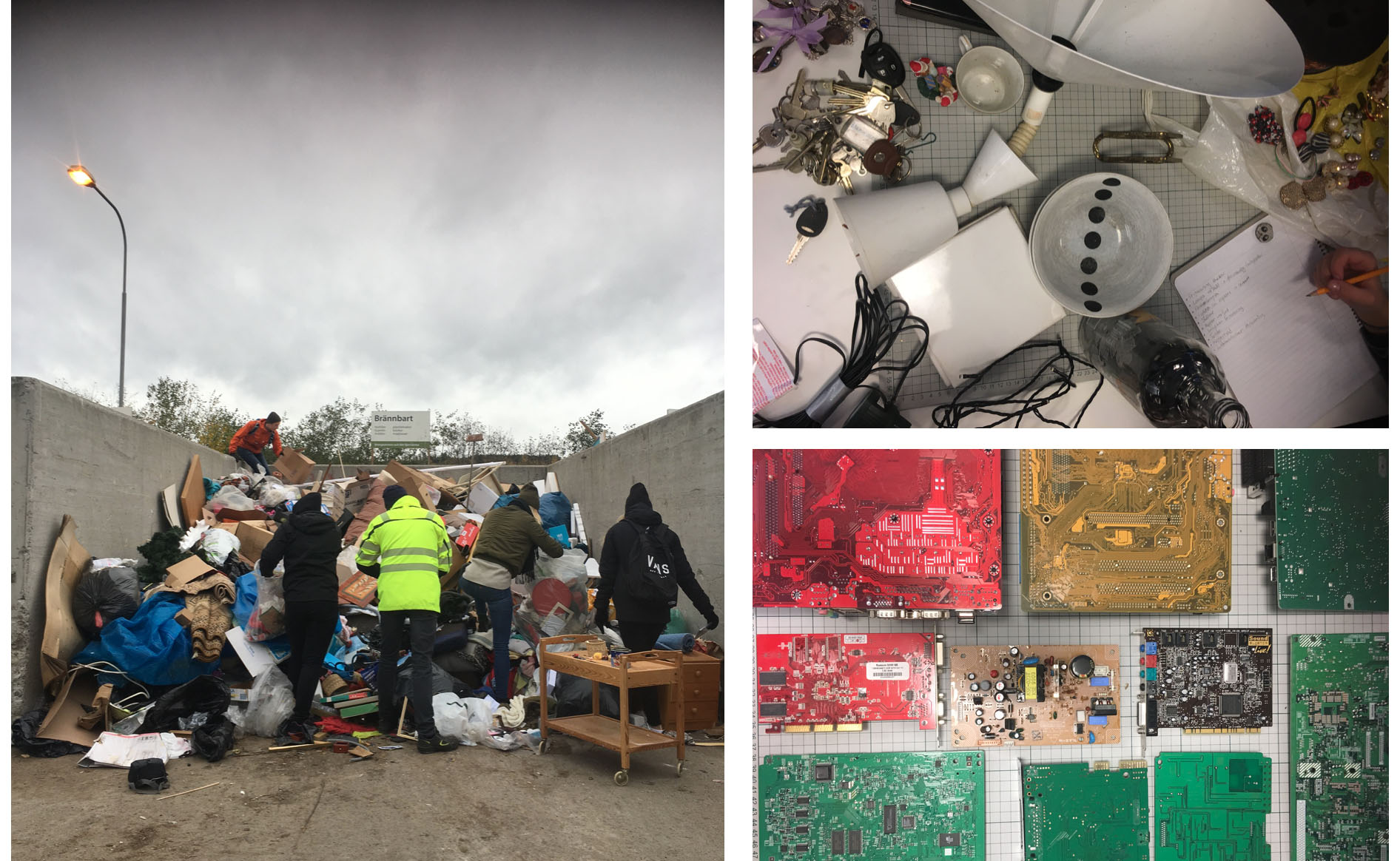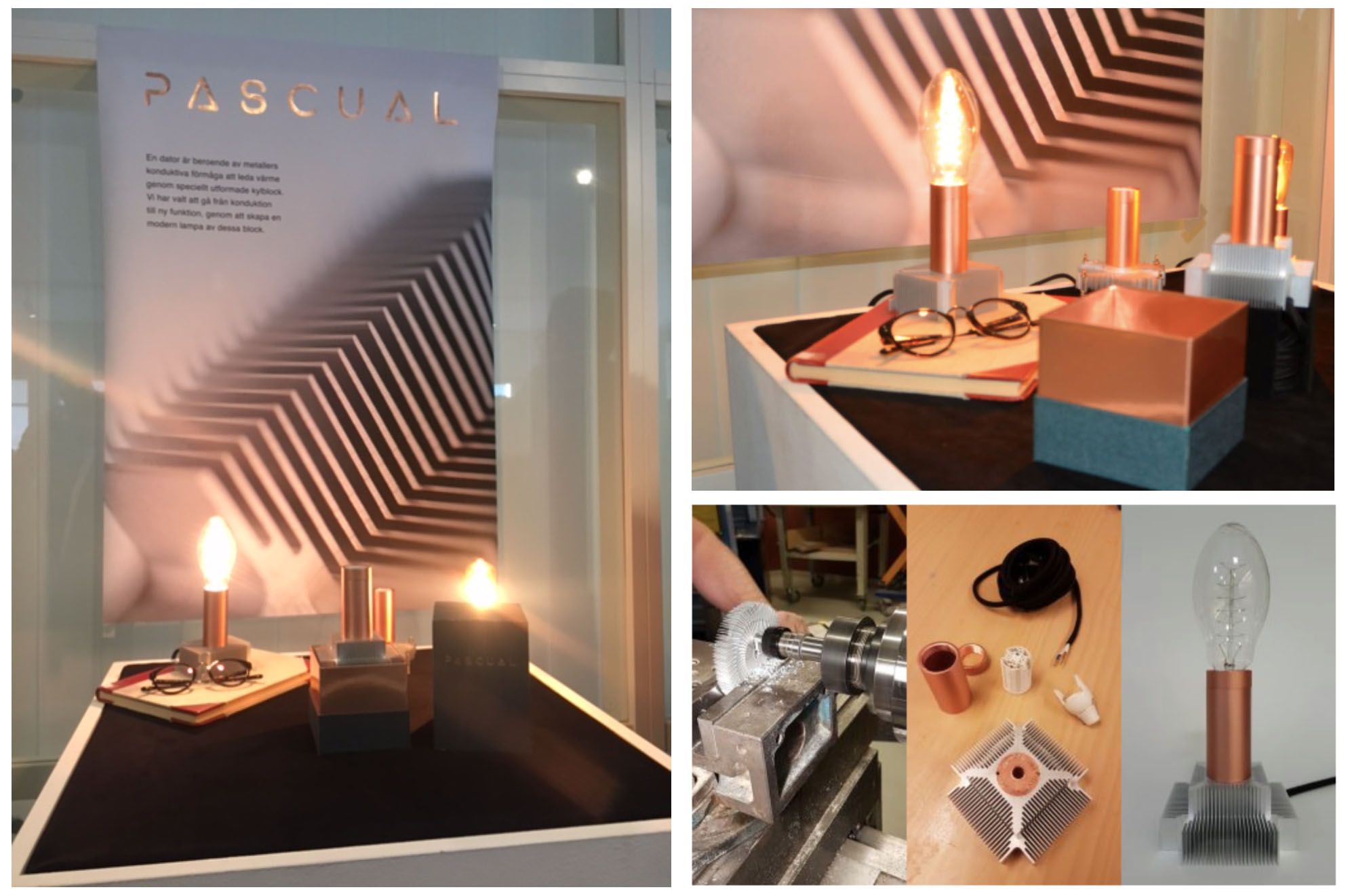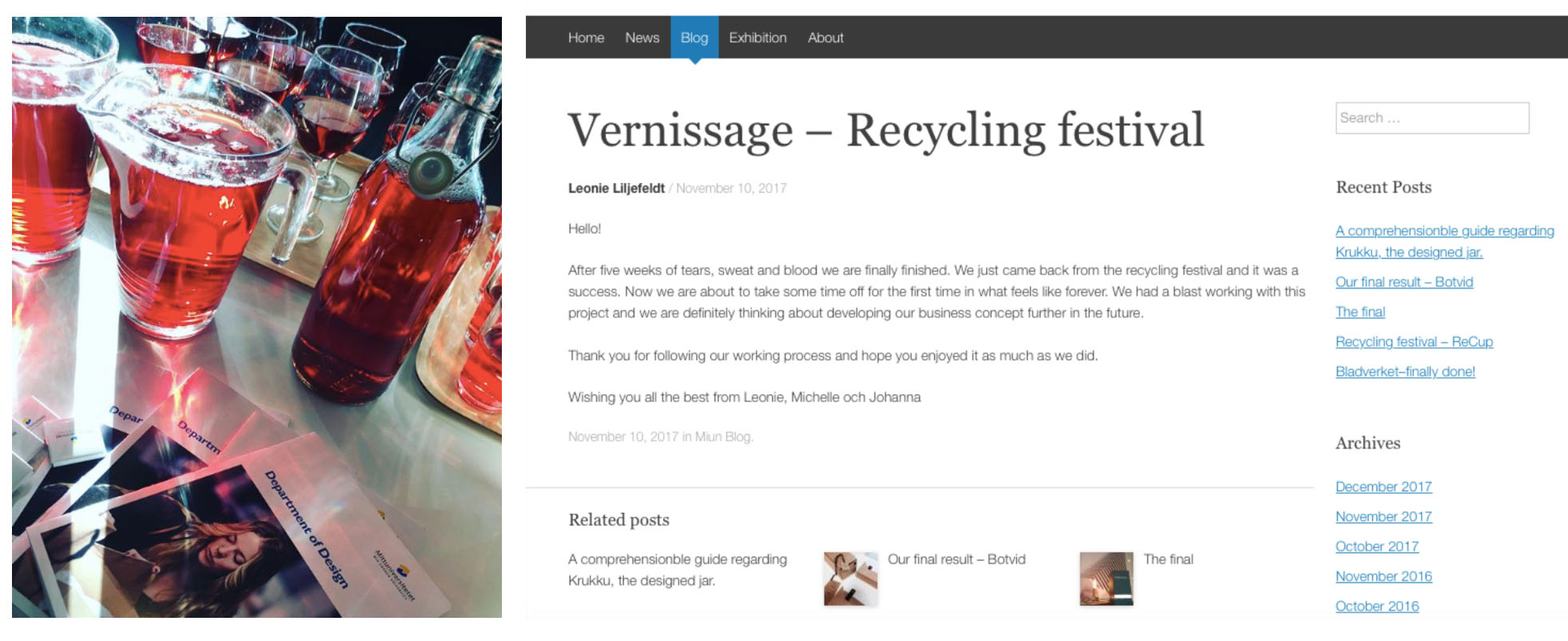Guest-Article: Circular Design in Higher Education
This article is contributed by Anna-Sara Fagerholm, Senior Lecturer in Graphic Design and Director of the Graphic Design degree programme, at the Department of Design, Mid Sweden University.
Design education
In a sustainable development we meet the needs of the present without compromising the ability of future generations to meet their own needs (Brundtland, 1987). To achieve this, we must redesign the way we produce, consume and recycle today. Here, design education all over the world has a responsibility supporting the transition to a circular economy.
At Mid Sweden University in the northern part of Sweden, design education for a sustainable society is in focus. In the degree programme, students are trained to evaluate design problems, design processes and design solutions in relation to the UN’s global goals for sustainable development. The sustainability goals are included in the programme syllabus, which gives an impact on student assignments, collaboration projects and research. The overall pedagogical view is that good design contributes to mutual understanding and in the long run a better world. A circular design-methodology is part of the education, including a scientific and artistic approach.
Circular design
Circular design can be described as the development of systems and products that no longer have a life cycle with a beginning, middle and end (Ellen Mac Arthur Foundation, 2012). One example of how that can be applied in higher education is when design students at Mid Sweden University create recycling festivals, with the aim to contribute to less waste and add value to the ecosystem in collaboration with the local waste disposal company. Following a design methodology process, students examine what people throw away and what is sorted for recycling. During a visit to the recycling facility, students choose thrown-away products that they redesign to meet the market again. The purpose of the recycling festivals is to manifest how we humans can recycle and take care of resources, instead of throwing away and buying new stuff. The idea is also to increase knowledge about waste through different visualizations.

Research part (student assignment Recycling Festival): “Investigate the challenge you face. Observe what we humans throw away and what we sort for recycling. How do we do? Why do we do it? Also examine what can be recycled instead of thrown away. Look up facts. Read and analyze. Interview people. Visit their homes. Visit the recycling facility. Present your research, creative briefs and moodboards.” Photo: Anna-Sara Fagerholm

Creative part (student assignment Recycling Festival): “Based on your research, you start the creative work. The creative part consists of creating a circular design project. Start with a creative circular design brief. At the examination, you present which design decisions you have made and why, the concept of the recycled and redesigned product, package, advertisement. Also, plan the recycling festival.” Photo and design: Marcus Ferm & Amanda Eriksson.

Reflective part (student assignment Recycling Festival): “Your group’s reflection on the design process and design methodology should be published weekly in text and images on the web. Also, you pitch your circular design process and concept at the recycling festival.”
Another project in circular design is when the students are investigating how fiber-based textiles, fabric made from trees from the region, can be designed, packaged and marketed with the goal of contributing to a sustainable development of the fashion industry. The project was carried out partly in a summer course with international students, and partly in collaboration with universities in Japan. The result was presented at the universities, the Swedish Embassy in Tokyo and as online exhibitions.
One last example is when students examine new circular business models through design methodology with the aim of developing the local food industry in the northern region of Sweden. Part of the project is to develop and position local food producers as socially, economically and environmentally sustainable. Participating companies are for example producers of local cheese, milk, fish, jam, tomatoes, honey and confectionery. This circular design project will continue 2021.
Design responsibility
Designing is creating and with creation comes responsibility. Design professionals and scholars have a significant responsibility to shape the current status on how systems and artefacts are designed, manufactured and packaged. Despite the fact that by far not all systems and products designed today are designed based on a circular model, there is a growing interest in the area. Research focusing on the role of design in a circular economy is increasing (Moreno, De los Rios, Charnley, 2016; Wastling, Charnley and Moreno, 2018).
A scientific and artistic approach enables well-researched creative ideas that could help contribute to how we humans can gain insights and better understand complex problems. At all levels – regional, national and international – it is necessary to think about and work with design for sustainable development. And it starts with circular design as an operative approach.
Literature
Brundtland, G., H. (1987). Report of the World Commission on Environment and Development: Our Common Future. http://www.un-documents.net/our-common-future.pdf. Downloaded: 2020-11-23
Ellen MacArthur Foundation, (2012). Towards the Circular Economy Volume 1: Economic and Business Rationale for an Accelerated Transition; Ellen MacArthur Foundation: Cowes, UK. Downloaded: 2020-11-09.
Moreno, M.; de los Rios, C.; Charnley, F. (2016). Guidelines for Circular Design: A Conceptual Framework. Sustainability, 8, 937.
Wastling, T.; Charnley, F.; Moreno, M. (2018). Design for Circular Behaviour: Considering Users in a Circular Economy. Sustainability, 10, 1743.

